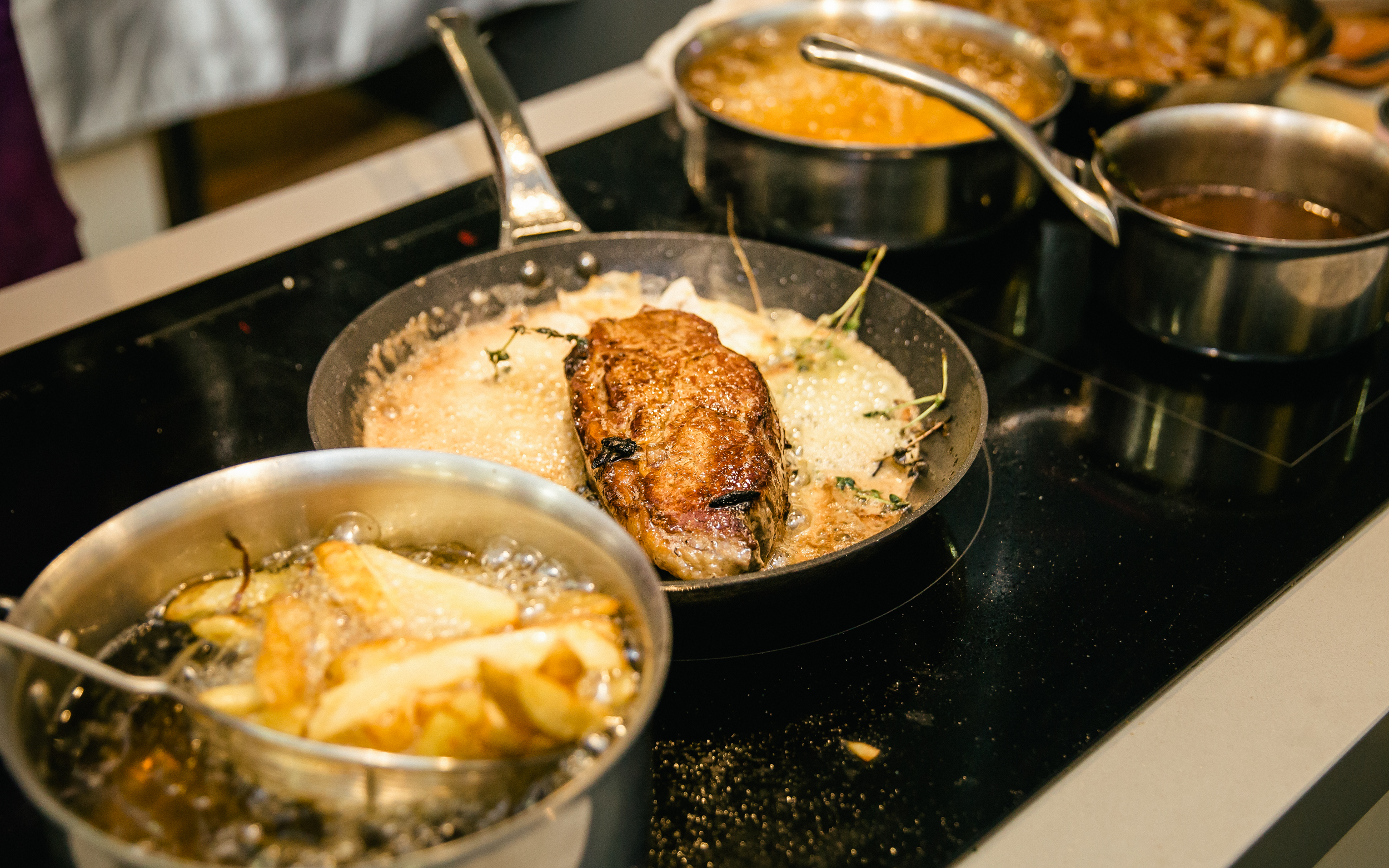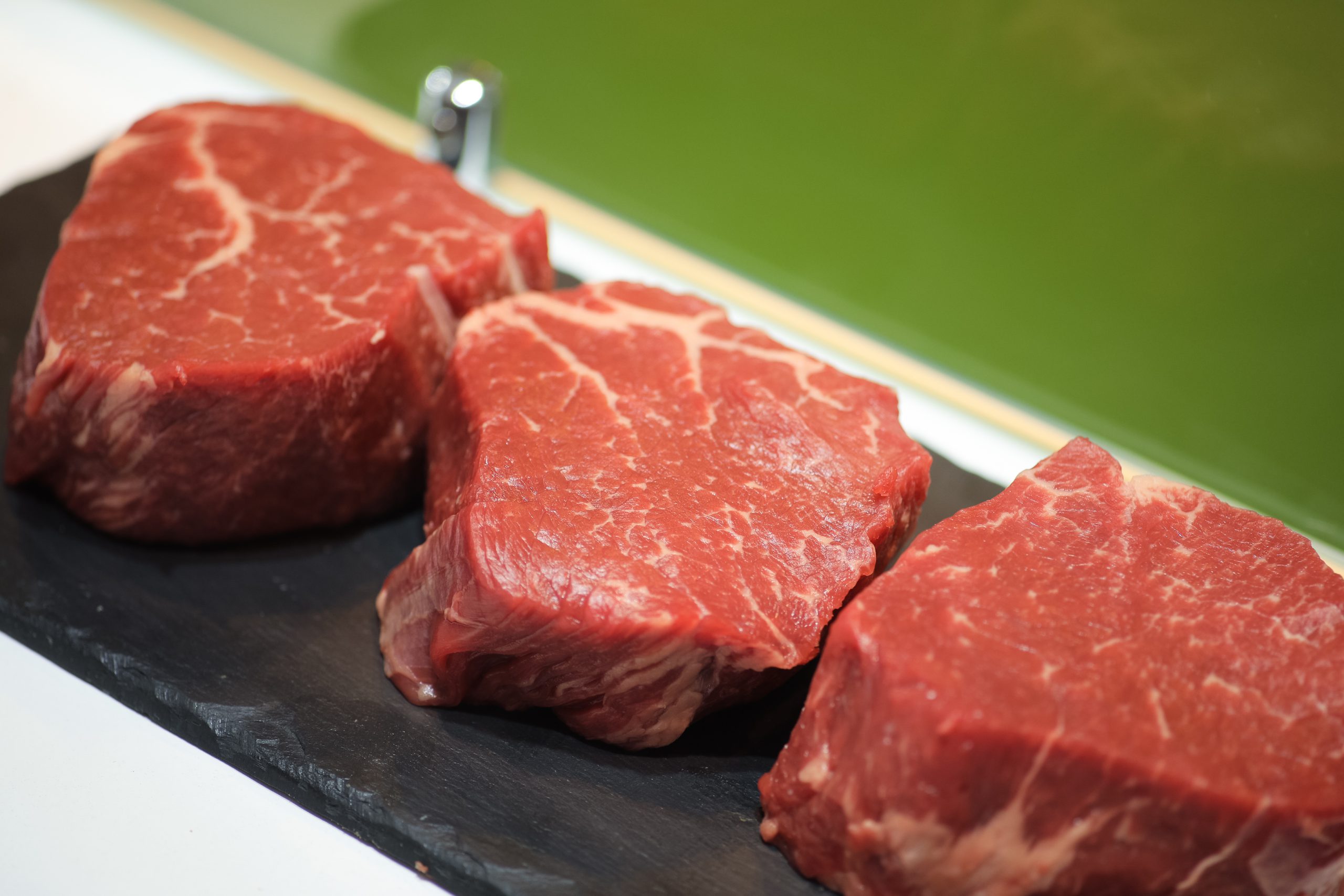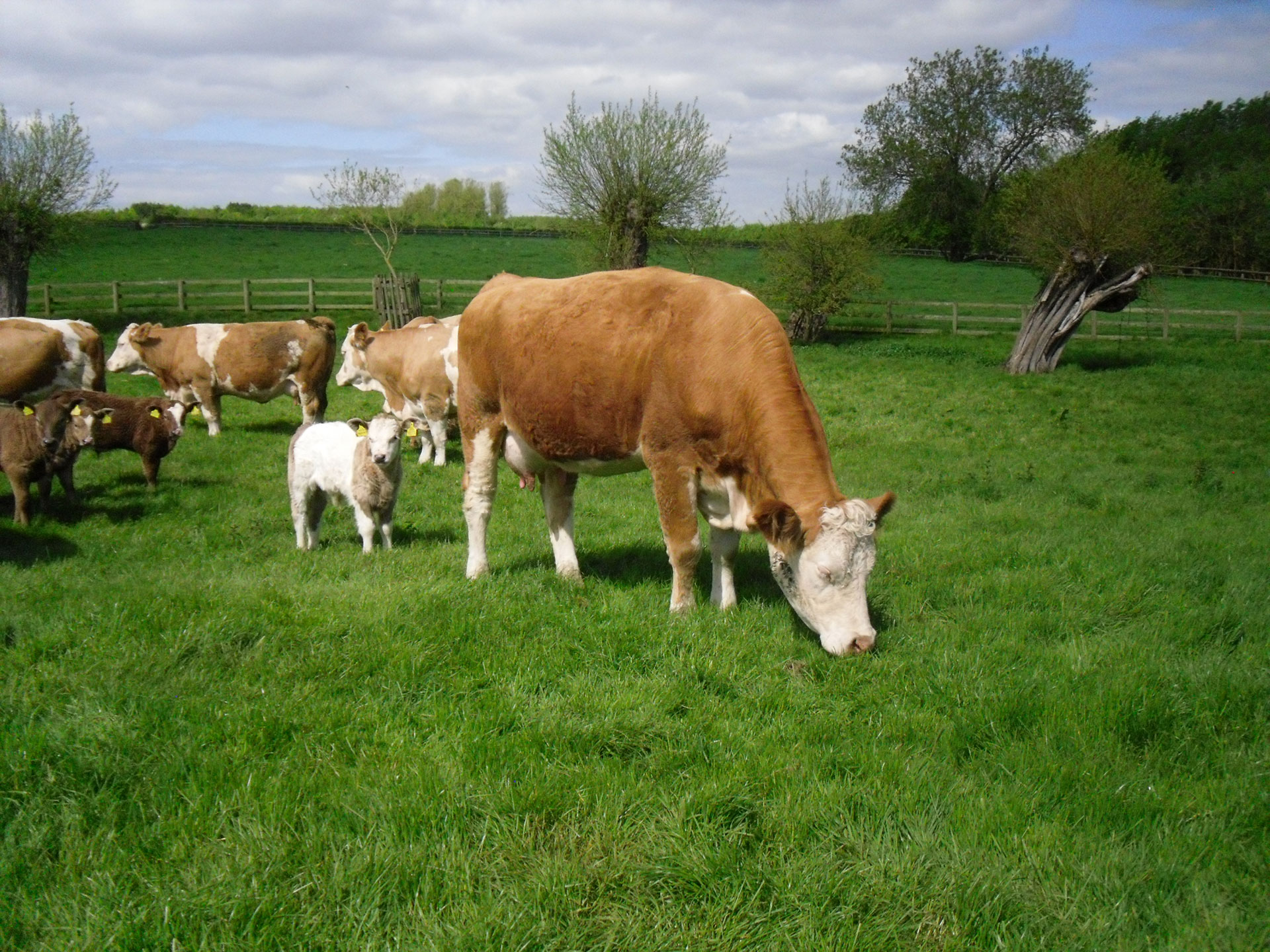Our culinary team is often asked for tips on the best way to prepare a pan seared steak. Denise Spencer-Walker shares her thoughts on the best way to pan sear our grass fed beef.
1. Your steak should be at room temperature before you cook it. No matter which cut of beef you are pan searing, tenderloin, hanger steak, rib-eye, rump steak and sirloin are some of my favorites to pan sear, the steak should be at room temperature before cooking and I recommended you pat the surface of the steak to dry it before cooking as this will help to form a good crust during cooking.
2. Make sure that you heat the pan before using. Whether using a heavy-duty thick frying pan, a heavy griddle pan or a cast iron skillet, your pan should very hot before cooking the steaks, and the pan should be roomy enough to avoid overcrowding the steak.
3. Coat both sides of the steak with some sort of oil or fat. I suggest that you coat both sides of the steaks with a mild oil, such as canola, and once the steak is searing you can add butter to the pan along with garlic cloves or fresh herbs for extra flavor.
4. Season your beef before adding it to the pan. You should season the steak with a little salt up to two hours before cooking and then add pepper just before cooking. Contrary to popular belief, seasoning a steak with salt ahead of time doesn’t draw out the moisture; it actually gives the steak time to absorb the salt and the meat becomes more evenly seasoned throughout.
5. Cook your steak for the same amount of time on each side. To build up an even crust on both sides, you will want to cook the meat for the same amount of time on each side and I recommend only flipping the steak once.
6. Let the meat rest once finished cooking. Your cooked steak should rest at room temperature on a warm plate ideally for around half of the steak’s total cooking time with a minimum of five minutes resting time. Any resting juices should be poured over the steak or into the accompanying sauce before serving.
Please be sure to share photos of your pan seared beef and tag us at @meattheukexporters



